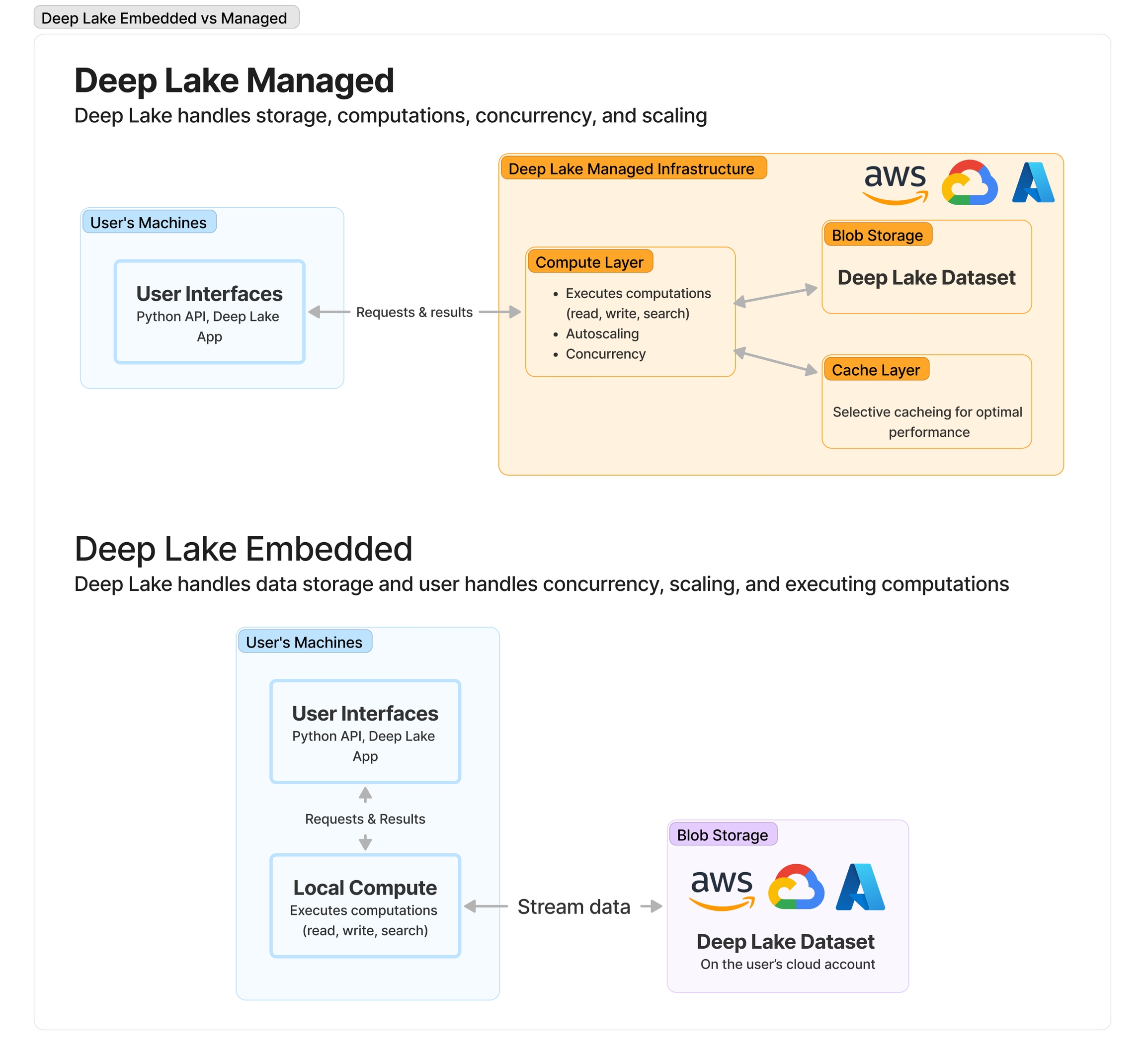Managed Tensor Database
Deep Lake Managed Database
Overview of Deep Lake's Managed Tensor Database
Deep Lake offers a serverless Managed Tensor Database that eliminates the complexity of self-hosting and substantially lowers costs. Currently, it only supports dataset queries, including vector search, but additional features for creating and modifying data being added in December 2023.

User Interfaces
LangChain and LlamaIndex
To use the Managed Vector Database in LangChain or Llama Index, specify dataset_path = hub://org_id/dataset_name and runtime = {"tensor_db": True} during Vector Store creation.
REST API
A standalone REST API is available for interacting with the Managed Database:
REST APIFurther Information:
Migrating Datasets to the Tensor DatabaseWas this helpful?